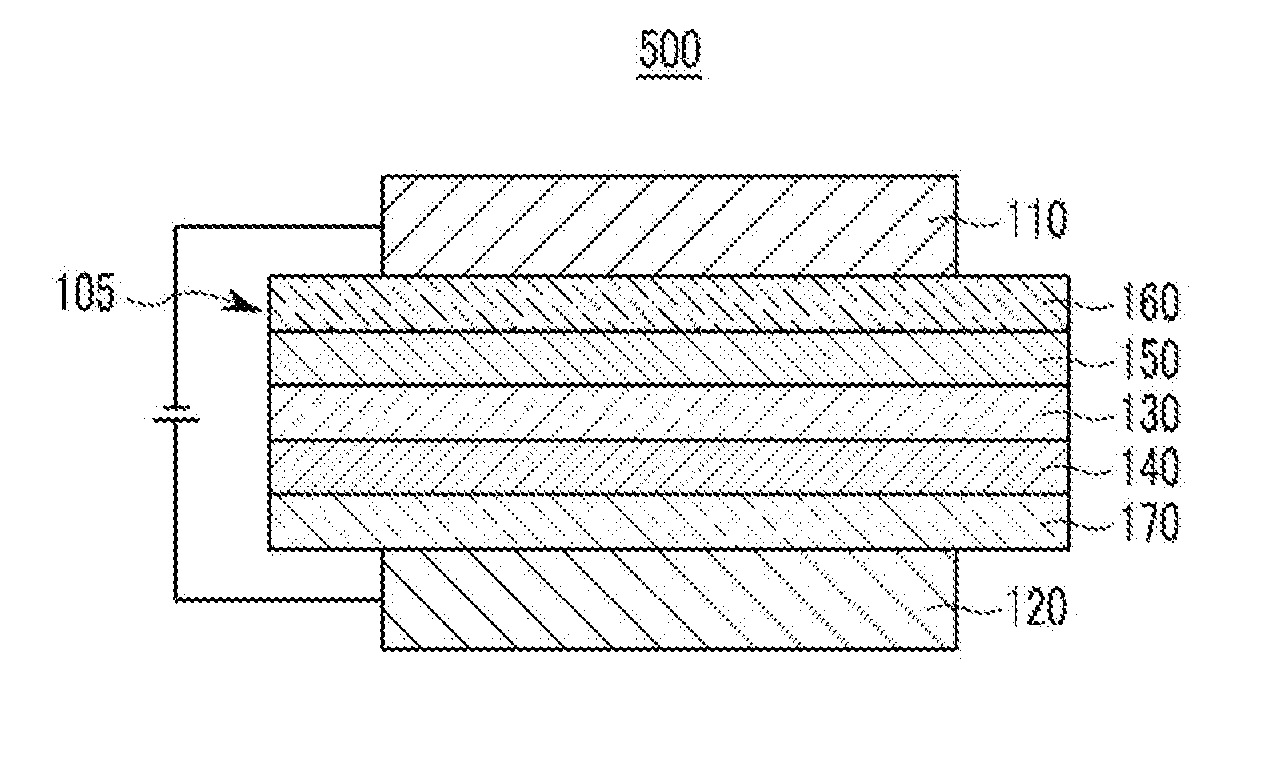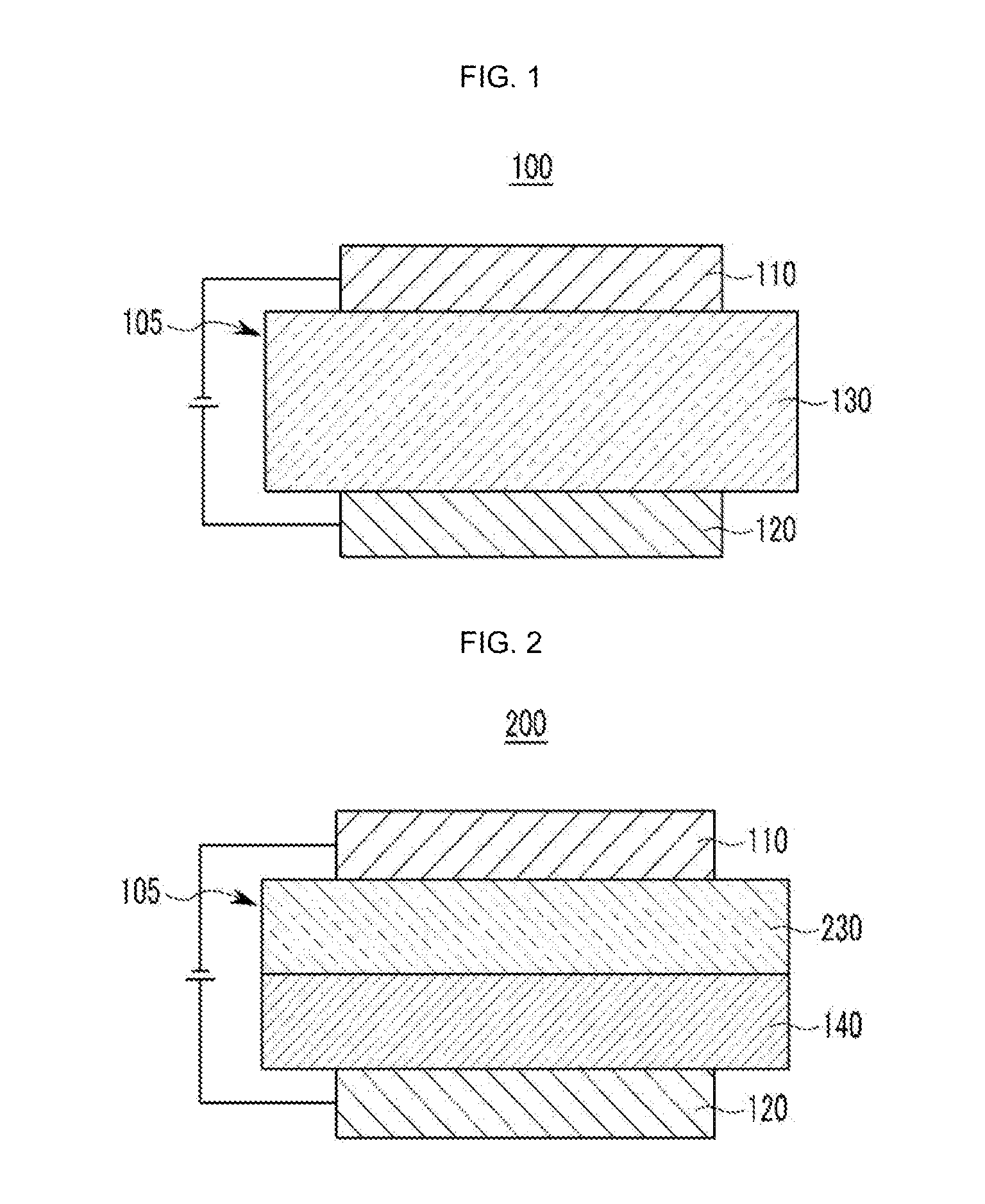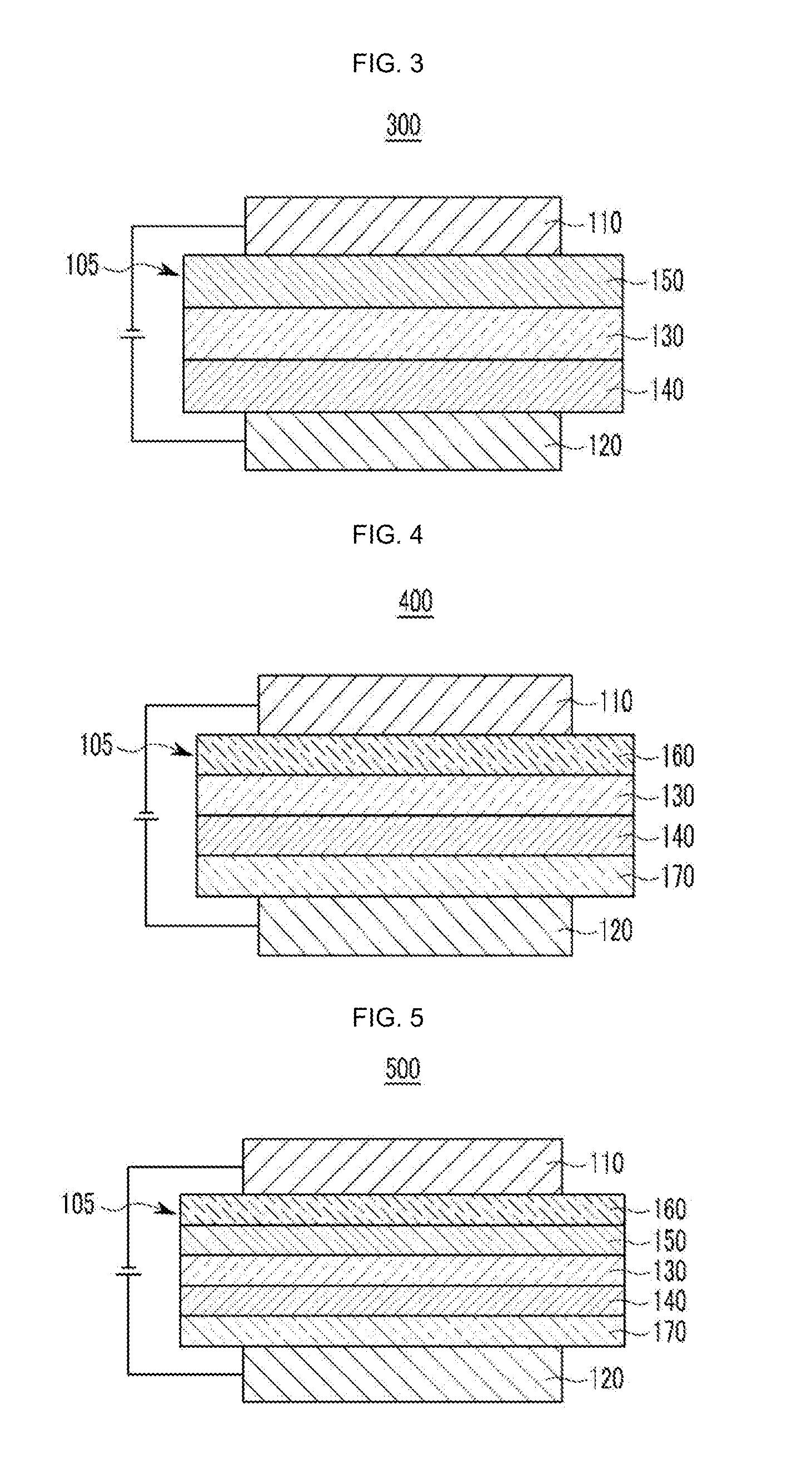Material for organic optoelectronic device, organic light emitting diode including the same, and display including the organic light emitting diode
- Summary
- Abstract
- Description
- Claims
- Application Information
AI Technical Summary
Benefits of technology
Problems solved by technology
Method used
Image
Examples
example 1
Synthesis of Compound Represented by Chemical Formula H-10
[0209]A compound represented by Chemical Formula H-10 is obtained according to the following method.
[0210]Preparation of Compound A
[0211]62.490 g (0.19 mmol) of 3,6-dibromocarbazole and 11.537 g (0.48 mmol) of sodium hydride dispersed in mineral oil are dissolved in 450 mL of DMF in a 2 L round-bottomed flask in an ice-bath, and the solution is agitated for 40 minutes. Then, another solution prepared by dissolving 61.769 g (0.23 mmol) of 2-chloro-4,6-diphenyl triazine in 450 mL of DMF is slowly added to the agitated solution in a dropwise fashion. The mixture is agitated for 12 hours. The reactant is poured into 2 L of water to complete the reaction, the resulting product is agitated for 30 minutes, and a solid produced therein is filtered. The solid is washed with methanol and then dried. The dried solid is dissolved in 2.4 L of chlorobenzene while being heated, and the solution is agitated at room temperature. Then, a solid...
example 2
Synthesis of Compound Represented by Chemical Formula I-1
[0215]A compound represented by Chemical Formula I-1 is synthesized according to the following method.
[0216]16.622 g (51.59 mmol) of 3-bromo-N-phenylcarbazole, 17.775 g (61.91 mmol) of N-phenylcarbazol-3-yl boronic acid, 200 mL of a mixture of tetrahydrofuran:toluene in a ratio of 1:1, and 100 mL of a 2 M potassium carbonate aqueous solution are mixed in a 500 mL round-bottomed flask having an agitator under a nitrogen atmosphere, and 2.981 g (2.58 mmol) of tetrakistriphenylphosphinepalladium (0) is added thereto. The mixture is heated and refluxed for 12 hours under a nitrogen atmosphere.
[0217]When the reaction is complete, the reactant is poured into methanol, and a solid produced therein is filtered. The solid is sufficiently washed with water and methanol, and then dried. The obtained solid is dissolved in 1 L of chlorobenzene while being heated. The solution is filtered through silica gel, and a solvent remaining therein ...
example 3
Synthesis of Compound represented by Chemical Formula J-1
[0219]A compound represented by Chemical Formula J-1 is obtained according to the following method.
[0220]Preparation of Compound J-1-1
[0221]204.56 g (815.26 mmol) of 2,5-dibromo-4-methylpyridine, 228.63 g (1875.1 mmol) of boronic acid, 1358 mL of 1,4-dioxane, and 815 mL of a 2 M potassium carbonate aqueous solution are mixed in a 4 L round-bottomed flask having an agitator under a nitrogen atmosphere, and 0 47.1 g (40.76 mmol) of tetrakistriphenylphosphine palladium (0) is added thereto. The mixture is heated and refluxed for 12 hours under a nitrogen atmosphere. When the reaction is complete, an organic layer produced therein is separated, and a solvent therein is completely removed. Then, 120.1 g of a compound J-1-1 (a yield of 60%) was obtained through column chromatography.
[0222]Synthesis of Compound J-1-2
[0223]120.1 g (489.63 mmol) of the compound J-1-1, 58.48 g (195.85 mmol) of iridium chloride, 816 mL of 2-ethoxyethanol...
PUM
 Login to View More
Login to View More Abstract
Description
Claims
Application Information
 Login to View More
Login to View More - R&D
- Intellectual Property
- Life Sciences
- Materials
- Tech Scout
- Unparalleled Data Quality
- Higher Quality Content
- 60% Fewer Hallucinations
Browse by: Latest US Patents, China's latest patents, Technical Efficacy Thesaurus, Application Domain, Technology Topic, Popular Technical Reports.
© 2025 PatSnap. All rights reserved.Legal|Privacy policy|Modern Slavery Act Transparency Statement|Sitemap|About US| Contact US: help@patsnap.com



